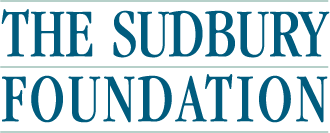Early Childhood Brain Building
More and more, researchers are convinced that early learning -- the learning that begins at birth and continues through age 3 -- is crucial to a child's potential cognitive ability. What's key, they say, is to provide young children with rich and varied learning experiences - even before they are able to walk or talk.
A new exhibit under development at The Discovery Museums (TDM) in Acton will do just that. Tentatively called the Brain Building Zone, the new gallery will help encourage early childhood learning through creative activities and parenting supports. The exhibit is slated to open in 2017 as part a planned renovation and expansion of TDM.
“The first three years of life are the most important for brain development because the majority of neural pathways are formed during this time,” said TDM’s CEO Neil Gordon.
According to the Harvard University Center on the Developing Child, Stanford University and other leading researchers*:
- In the first few years of life, 700 new neural connections are formed every second.
- Neural connections and the architecture of the developing brain are built through back-and-forth interactions with adults in enriching environments.
- Brain building is disrupted by “toxic stress,” a term that describes chronic stressful conditions rooted in causes such as poverty, neglect, or maternal depression. Toxic stress increases the likelihood of developmental delays.
- Several studies have shown that, as early as 18 months, there are notable disparities in vocabulary between children from language-rich, high interaction homes and those who are not. Recent Stanford research showed that by age two, this equals a six month gap in language processing skills and vocabulary. By increasing interaction, using richer language and child-directed talk, parents can help their child to learn more quickly.
TDM anticipates the gallery will have a distinctive look and feel, inspired by the early childhood centers in Reggio Emilia, Italy known for innovation in early education. An advisory committee of industry experts and local practitioners has been formed to work with staff over the next three years (and beyond) to plan and execute the gallery design and usage. A highlight of the effort is a focus on helping parents’ learn how to encourage and appreciate the curiosity and learning potential of their infants and toddlers.
TDM has received just under $300,000 in funding to create the new gallery/exhibit including $150,000 grant from the Sudbury Foundation and a $149,447 grant from The Institute of Museum and Library Services (IMLS).
"With the support of the Sudbury Foundation and IMLS, our new exhibit will integrate current research on early learning and brain development into exhibit experiences that engage families in parent-child interactions to promote language development and emotional resilience in young children," said Gordon.
For more information on early childhood learning, please check out the following sites:
National Assn. for the Education of Young Children
Photo courtesy of Bart van Maarseveen
* Source: Brain Building in Progress

